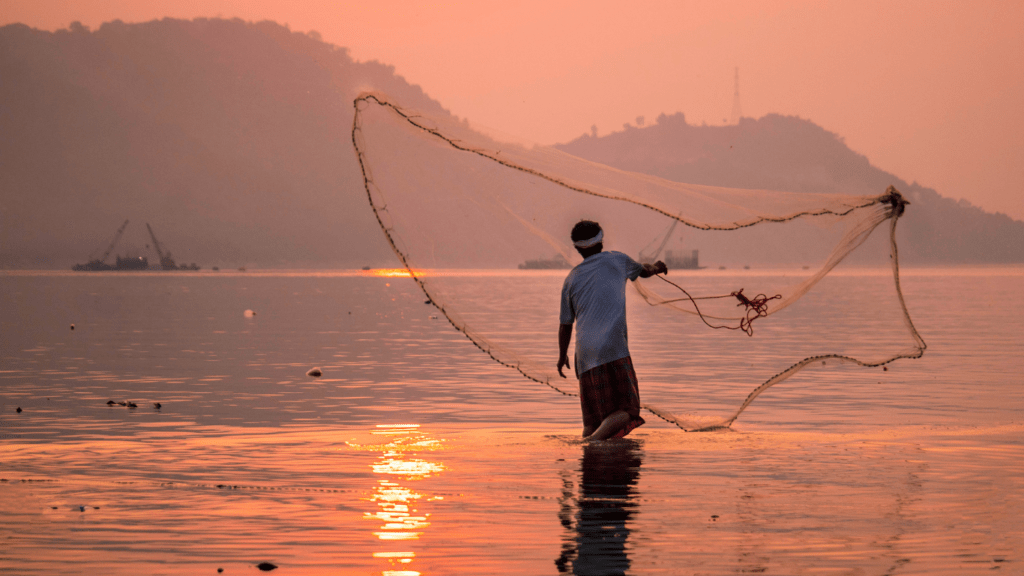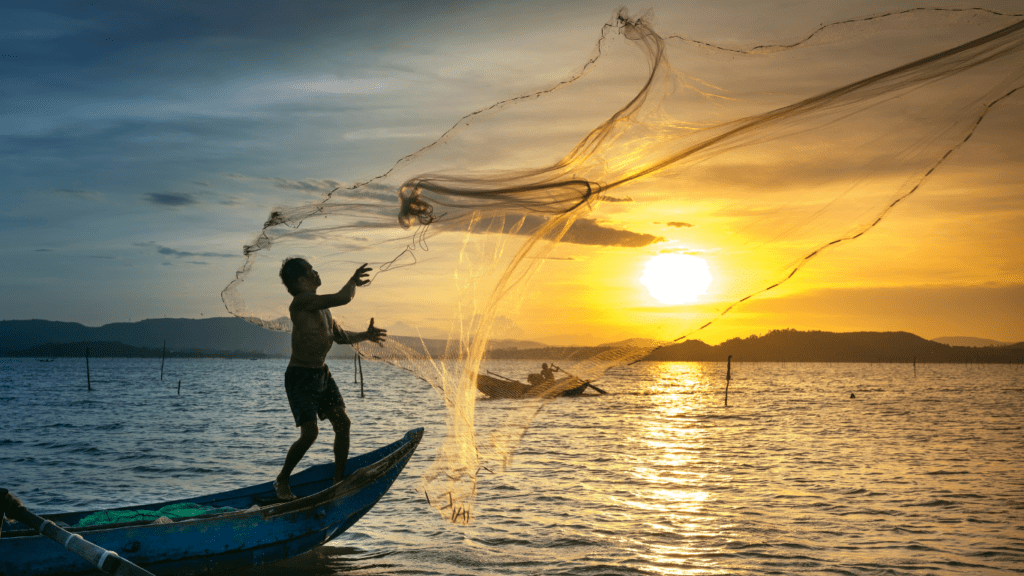Embarking on the journey of fly fishing can be both exhilarating and rewarding for beginners. As someone who has delved into the world of fly fishing, I understand the excitement and curiosity that come with starting this timeless angling technique. In this beginner’s guide, I’ll walk you through the essential steps to kickstart your fly fishing adventure and help you navigate the waters with confidence.
From selecting the right gear to mastering basic casting techniques, this article aims to equip you with the fundamental knowledge needed to step into the world of fly fishing. Whether you’re drawn to the tranquility of casting on a serene river or the thrill of landing your first catch, fly fishing offers a unique experience that connects anglers with nature in a profound way. Join me as we unravel the art and science of fly fishing together.
Overview of Fly Fishing 101
Embarking on the journey of fly fishing opens up a realm of excitement and connection with nature. As I delve into the fundamentals of Fly Fishing 101, I aim to guide beginners through the essential steps to kickstart their fly fishing adventure. From choosing the right gear to mastering casting techniques, the art and science of fly fishing offer a unique and enriching experience for anglers of all levels. Join me as we unravel the intricacies of this timeless angling technique together.
Essential Gear for Beginners
When it comes to fly fishing, having the right gear is crucial for a successful angling experience. As a beginner, selecting the appropriate equipment can make a significant difference in your fishing journey. Here are the essential pieces of gear you’ll need to get started:
Fly Rods and Reels
I recommend starting with a versatile fly rod, such as a 9-foot, 5-weight rod. This size is perfect for beginners as it allows for a variety of fishing techniques and is suitable for different fish species. Pair your rod with a matching fly reel that balances well with the rod’s weight. Opt for a reel with a smooth drag system to handle fish efficiently.
Fly Lines and Leaders
Choosing the right fly line is essential for casting accuracy and presentation. As a beginner, a weight-forward fly line is a good choice as it helps with casting over short to medium distances. Match your fly line with leaders of various lengths and sizes to adapt to different fishing conditions. Leaders help to transfer energy from the fly line to the fly delicately, improving your chances of a successful catch.
Basic Techniques for Fly Fishing
As a seasoned angler, I understand the importance of mastering basic techniques when starting your fly fishing journey. Let’s delve into the essential skills you need to develop to become a proficient fly fisher.
Casting:
When it comes to fly fishing, mastering the art of casting is key. Practice your casting technique in open areas to improve your accuracy and distance. Remember to use smooth, controlled movements to avoid spooking the fish.
Presentation:
The way you present your fly on the water can greatly impact your success. Focus on making gentle, natural presentations to mimic the movements of real insects. This will attract fish and increase your chances of a bite.
Setting the Hook:
Setting the hook effectively is crucial in fly fishing. Once you feel a fish take the fly, a quick, decisive hook set is necessary to ensure it stays on the line. Practice this motion to improve your hook-up rate.
Playing and Landing Fish:
Playing and landing a fish requires finesse and patience. Keep the line tight to tire out the fish gradually, avoiding sudden movements that could result in a lost catch. Use a landing net to safely bring the fish to shore without harming it.
Reading Water:
Understanding the behavior of fish in different water conditions is essential. Learn to identify prime feeding spots, such as eddies, riffles, and pools, where fish are likely to be found. Observing the water’s surface for rising fish can also guide your fishing strategy.
Mastering these basic techniques will set you on the path to becoming a skilled fly angler. Practice regularly, stay patient, and enjoy the unique experience that fly fishing offers.
Selecting the Right Flies
When it comes to fly fishing, selecting the right flies is a crucial aspect of achieving success on the water. As an angler, my experience has taught me the significance of choosing the appropriate flies to match the insects or baitfish in the water, enticing the target fish to strike.
To maximize your chances of a successful fishing outing, consider the following key points when selecting your flies:
- Matching the Hatch: Observing the insects around the water can give you valuable insights into what the fish are feeding on. Choose flies that closely resemble the size, shape, and color of the insects present.
- Understanding Water Conditions: Different water conditions require different types of flies. For example, on sunny days, fish may be more selective and wary, making it essential to use more delicate and natural-looking flies.
- Trying Different Patterns: It’s always a good idea to have a variety of fly patterns in your arsenal. Experimenting with different types of flies allows you to determine what the fish are responding to on a particular day.
- Matching the Fly to the Fish: Consider the species of fish you’re targeting when selecting your flies. Different fish have varying feeding behaviors, so tailor your fly selection to suit the preferences of the specific species you’re trying to catch.
By paying attention to these factors and adapting your fly selection accordingly, you can increase your chances of a successful fly fishing expedition. Remember, the joy of fly fishing lies not only in catching fish but also in the process of learning and refining your skills as an angler.
Tips for Successful Fly Fishing
Expanding on the essentials covered earlier, here are crucial tips to enhance your fly fishing experience:
- Understand Local Waters: Research the water bodies you plan to fish in. Knowing the aquatic life and conditions helps in selecting the right flies.
- Practice Casting: Regular practice improves your casting accuracy and distance. Focus on controlled movements for effortless and precise casts.
- Learn Insect Behavior: Observing insect activity on the water aids in selecting the appropriate fly patterns. Understanding when and why fish feed on specific insects is key.
- Maintain Stealth: Approach fishing spots quietly, wearing neutral colors to blend in. Avoid making sudden movements that can startle fish.
- Set the Hook Properly: Master the technique of setting the hook when you feel a bite to ensure a good hook-up rate with the fish.
- Stay Patient and Persistent: Fly fishing can be challenging, so patience is crucial. Keep practicing and adapting to different conditions to improve your skills.
By incorporating these tips into your fly fishing routine, you’ll elevate your angling game and increase your chances of a successful catch.


 Ashleyen Gurganusoon, the founder of Terra Tactician Tactics, has always had a profound passion for the great outdoors and a deep-rooted belief in the power of nature to inspire and transform lives. With a background steeped in adventure and exploration, Ashleyen launched Terra Tactician Tactics to share her love for nature and to create a platform where outdoor enthusiasts of all levels can find valuable resources, expert advice, and the latest trends in outdoor activities. Her vision is to empower people to embrace the challenges and beauty of the wild, providing them with the knowledge and confidence to venture safely and enjoyably into nature.
Under Ashleyen’s leadership, Terra Tactician Tactics has become a trusted source for outdoor and survival enthusiasts worldwide. Her dedication to curating high-quality content on camping, hiking, backpacking, fishing, hunting, and adventure travel reflects her unwavering commitment to fostering a community that shares her passion for the outdoors. Ashleyen's approach is driven by her desire to help others experience the joys of nature and adventure while prioritizing safety, sustainability, and respect for the environment. Through Terra Tactician Tactics, she continues to inspire countless individuals.
Ashleyen Gurganusoon, the founder of Terra Tactician Tactics, has always had a profound passion for the great outdoors and a deep-rooted belief in the power of nature to inspire and transform lives. With a background steeped in adventure and exploration, Ashleyen launched Terra Tactician Tactics to share her love for nature and to create a platform where outdoor enthusiasts of all levels can find valuable resources, expert advice, and the latest trends in outdoor activities. Her vision is to empower people to embrace the challenges and beauty of the wild, providing them with the knowledge and confidence to venture safely and enjoyably into nature.
Under Ashleyen’s leadership, Terra Tactician Tactics has become a trusted source for outdoor and survival enthusiasts worldwide. Her dedication to curating high-quality content on camping, hiking, backpacking, fishing, hunting, and adventure travel reflects her unwavering commitment to fostering a community that shares her passion for the outdoors. Ashleyen's approach is driven by her desire to help others experience the joys of nature and adventure while prioritizing safety, sustainability, and respect for the environment. Through Terra Tactician Tactics, she continues to inspire countless individuals.